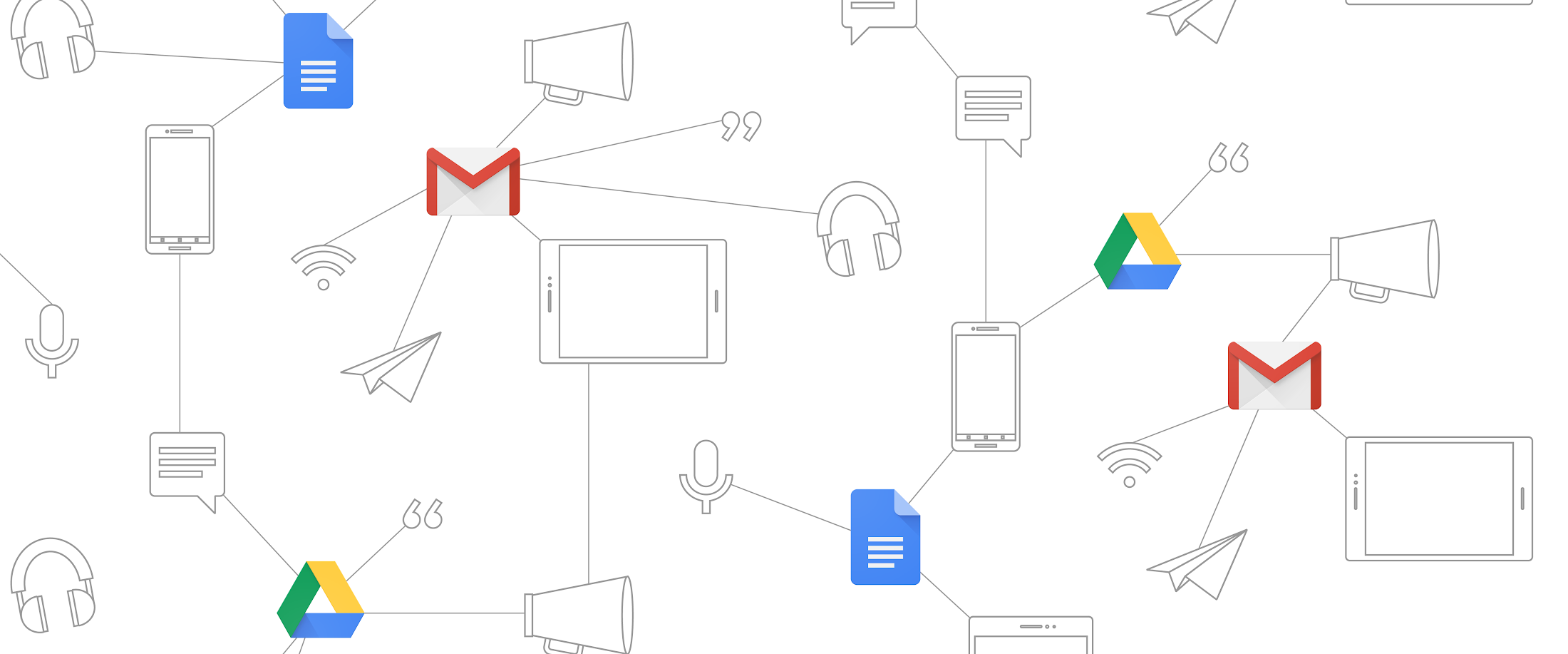Those of you managing your own business know all too well that work doesn’t stop when you leave the office—which could be your storefront, a warehouse, a spare desk in your living room, or a laptop at a café. And whether you’re selling fashion, food or furniture, creating the next killer app or improving patient care, you don’t want the business to slow down when you’re working on the run.
With G Suite, you can save time and shift focus to the most important tasks, like hitting project deadlines or keeping customers happy. Use these six work hacks to stay productive from anywhere.
1. Work offline in Gmail, Google Docs and Drive.
We’ve come to expect 24/7 Wi-Fi these days, but sometimes that’s not always the case. If you find yourself without Wi-Fi access, you can still work offline in Gmail, Docs and Drive when you’re working in Chrome browser. Whatever emails you write and files you update will get synced with Google once you get back on Wi-Fi.
Setting up offline access in Gmail is easy. Here’s how:
- Go to Settings in the top right of your Gmail.
- Under the Offline tab in the far right, select the “Enable offline mail” box. Note: you can even choose how many days of emails you want to store.
- Make sure to click Save Changes when you’re done.
- Now you can access Gmail offline by visiting mail.google.com. Just remember, offline features will only work within the Chrome browser.
To work offline in Drive, Docs, Sheets or Slides, install the Google Docs Offline extension for Chrome. Follow these instructions.
2. Write emails in less time.
Emails may only take a few minutes to write, but multiply that time by the number of messages you send in a day, and you’ll see what a big job email is. Gmail has features, Smart Compose, and Smart Reply, that are powered by artificial intelligence to help you get through your inbox quicker. Smart Compose can help you write emails faster by suggesting common phrases, or even personalized suggestions, as you type an email. When they appear, simply accept the suggestions and get going by clicking the “Tab” button on the web (or swiping right on mobile). On the other hand, Smart Reply can help you reply to emails quickly with pre-suggested responses in your inbox. A few seconds saved here and there with predictive text can add up.
3. Set up and join meetings from anywhere—no PIN codes required.
Don’t glue yourself to a desk just because you have a conference call. When you use Calendar to schedule a meeting in Hangouts Meet, the Hangout link and a dial-in number are added automatically to the invitation, so you can jump right into a meeting from your browser in one click
This means that you won’t need to send complicated PIN codes to attendees unless they want to dial in from the phone. But don’t worry, you’re covered there too. Dial-in numbers are automatically populated in the calendar invite too, just in case!
Also, if you add the Meet app to tablets and phones, you can jump on Hangouts from just about anywhere (or work offline, as we mentioned).
If you have a larger office and several employees, Calendar’s automatic room booking feature finds and suggests the most convenient rooms for you to book, as well as equipment available in each room like monitors or A/V tools. It’s handy if you’re trying to schedule a meeting quickly. To use this feature, your IT admin first needs to register meeting room details.
4. Snap a photo to take notes (instead of typing them).
A picture doesn’t have to be worth a thousand words to save you valuable time on the go. Using Keep, you can take pictures and add them to notes and lists of to-dos. Taking a picture is much faster than writing out long notes—and the image can tell you much more than text can.
5. Prioritize files automatically.
Moving files from paper to online storage can reduce clutter—but you still need some know-how and tools to help you find your files once they’re saved in the cloud. In Drive, there’s an option in the left-hand navigation called “Priority” that uses machine learning to predict and surface important files for you quickly. It can also suggest “workspaces,” which clusters relevant documents together to help you stay focused on certain projects. This way, your most important files appear as soon as you open Drive.
Another option for finding files quickly is to download the Chrome extension, “Quick Search for Google Drive.” Use this extension to search for Drive files right within your Chrome browser search bar.
6. Create documents faster.
Still typing out letterheads, headers, and footers within your document? Save time by using Docs templates. Or, use voice typing, to put “pen to paper” quicker. Go to the “Tools” menu within your Doc (if you’re using Chrome browser), then click on “Voice typing” to speak and see text on-screen. You can even use voice commands to change font styles, add tables, and insert links.

